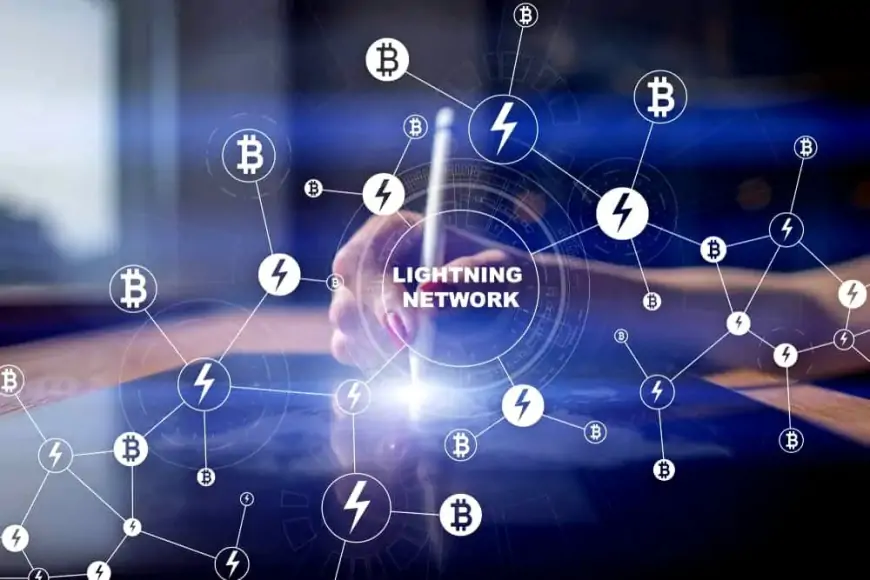What is Lightning Network and how does it work? Everything you need to know
Learn about Lightning Network, a protocol layer built on top of Bitcoin, enabling faster and cheaper transactions through off-chain payment channels.

What is Lightning Network?
Lightning Network, a cryptocurrency protocol utilizing distributed ledger technology, was developed by Joseph Poon and Thaddeus Dryjain. It serves as a layer two (L2) scaling solution for the Bitcoin blockchain.
The primary objective of the Lightning Network is to facilitate the widespread adoption of Bitcoin. Currently, the blockchain is constrained by its low throughput and fluctuating transaction fees. The Lightning Network introduces off-chain payment mechanisms, allowing for instantaneous, high-capacity, and cost-effective BTC transactions. These represent the key technical obstacles hindering Bitcoin's ambition to function as a global peer-to-peer online payment system.
What significance does the Lightning Network hold for Bitcoin?
Bitcoin's transaction speed and cost currently pose challenges in competing with global payment networks like Mastercard and Visa. According to Arcane Research, Bitcoin's practical transaction capacity is limited to seven transactions per second (TPS), while Visa can handle 5,200 TPS (as of 2021). Transaction confirmations for Bitcoin can take up to 10 minutes or more, which is impractical for everyday transactions like Uber rides or cafe purchases.
Moreover, Bitcoin transaction fees are relatively high. On-chain data from Blockchair in July 2023 indicated an average fee of $1.12 per Bitcoin transaction. To address these issues, Joseph Poon and Thaddeus Dryja proposed the Lightning Network in a whitepaper published on January 14, 2016. The Lightning Network aims to establish a network of bidirectional payment channels layered on top of the Bitcoin blockchain. This network facilitates faster and cheaper transactions while maintaining the security and decentralization of the Bitcoin payment system.
How does the Lighting Network work?
The Lightning Network's whitepaper proposes a scaling solution that minimizes the amount of data published on the Bitcoin blockchain initially, with net settlement added later. Utilizing multi-signature transactions and smart contracts, the Lightning Network establishes payment channels between two parties, requiring consent from both for money transfers. These channels are created by placing funds into a two-party multi-signature Bitcoin address, facilitating instant and fee-free transactions off-chain. Gas fees are incurred only when interacting with the Bitcoin blockchain, such as when creating or closing the channel. Either party can close the channel at any time by broadcasting its state to the underlying blockchain. In this setup, the Bitcoin blockchain acts as an arbiter, ensuring transactions conducted off-chain via the Lightning Network are enforceable on-chain.
How do everyday users access the Lightning Network?
In recent years, many cryptocurrency exchanges, digital wallets, and crypto-friendly companies have announced integration with the Lightning Network, enabling everyday users to effortlessly send Bitcoin via this network. Platforms like Twitter now allow users to send and receive tips in Bitcoin using Lightning Network-integrated wallets like Strike. Additionally, platforms such as Substack have introduced Lightning Network-enabled Bitcoin payments. El Salvador has emerged as a significant hub for Bitcoin and Lightning Network adoption, with various businesses adopting Lightning-based payments, leading to a significant increase in transactions on the Lightning Network in April 2022 compared to the previous year.
Drawbacks of the Lightning Network
The Lightning Network, in existence for several years, has sparked debate within the Bitcoin community. Here are some critiques of Bitcoin's Lightning Network:
- Liquidity constraints: Users must initially deposit a balance into channels, leading to liquidity constraints within the system.
- Routing fees: While it doesn't entirely eliminate transaction fees, users incur gas fees to open and close payment channels and routing fees to Lightning Network nodes for processing payments.
- Channel imbalance: Unidirectional payments may cause an imbalance in channel funds, leaving bitcoins stuck on one side of a channel.
- Inbound illiquidity: Users may only send bitcoins if funds are predominantly on their side of the channel, creating inbound illiquidity.
- Liquidity bottlenecks: Insufficient liquidity in channels may hinder large Bitcoin payments from being processed on the Lightning Network.
- Node operations: Users managing their nodes must keep systems operational round the clock for transaction signing. While using the Lightning Network without running nodes is possible, running one's node is seen as the most secure and private option.
In response to Bitcoin's limited scalability, it has been predominantly categorized as a 'store of value' rather than a global payment system. However, innovations like the Lightning Network aim to shift this narrative by addressing scalability issues.












































